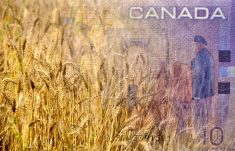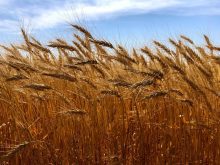Skiff, Alberta / Reuters — Durum, the wheat used to make pasta, has fared better against dry conditions than other major crops in a pocket of southeastern Alberta, crop tour scouts noted on Wednesday.
Durum is typically planted in drier soils than spring wheat, but fields still looked surprisingly decent, given some of the driest conditions in decades on the Prairies.
Yields looked to fall slightly below average in the area, said Justin Daniels, director of commodity risk management at CWB Market Research Services.
“We haven’t seen a disaster yet in durum,” he said in drizzly conditions.
Read Also

U.S. livestock: Cattle futures surge as second screwworm case announced
Chicago | Reuters – Chicago Mercantile Exchange cattle futures rallied on Friday as two new screwworm cases were announced in…
The tour organized by CWB Market Research is travelling through Thursday on three routes across the provinces of Alberta, Saskatchewan and Manitoba.
Durum stood tall and carried large heads of kernels in most fields.
Near Foremost, Alberta, however, fields looked thin and short, pointing to how scattered rains have resulted in varying farmer fortunes from one field to the next.
Quality of durum in Canada — the biggest exporter – may be more important than the crop’s size, given lower grades last year, said Courtney Boryski, a trader at U.S. commodity company Gavilon.
On Tuesday, spring wheat yields measured less than half of last year’s results in southeastern Alberta, but were on track to set a record high in southern Manitoba.
In an area stretching from north of Calgary to Lethbridge, Alberta, spring wheat yields averaged 23 bushels per acre, well short of the previous year’s 50 bushels, said CWB weather and crop specialist Bruce Burnett.
Farther east in Manitoba, where rain has been adequate, spring wheat was in “excellent shape,” and yields averaged 69 bushels per acre, close to a record for the route through southern Manitoba to Brandon.
Canola fields also looked impressive there, Burnett said, in contrast to the small, late-developing fields in Alberta.
In Saskatchewan, , crops looked better than expected from Saskatoon to Melfort, Prince Albert and Lloydminster, he said.
Wheat averaged 52 bushels per acre, similar to last year, and canola yields also looked in line with 2014.
Reuters is travelling on the CWB tour route through southeastern Alberta, southwestern and south-central Saskatchewan.















